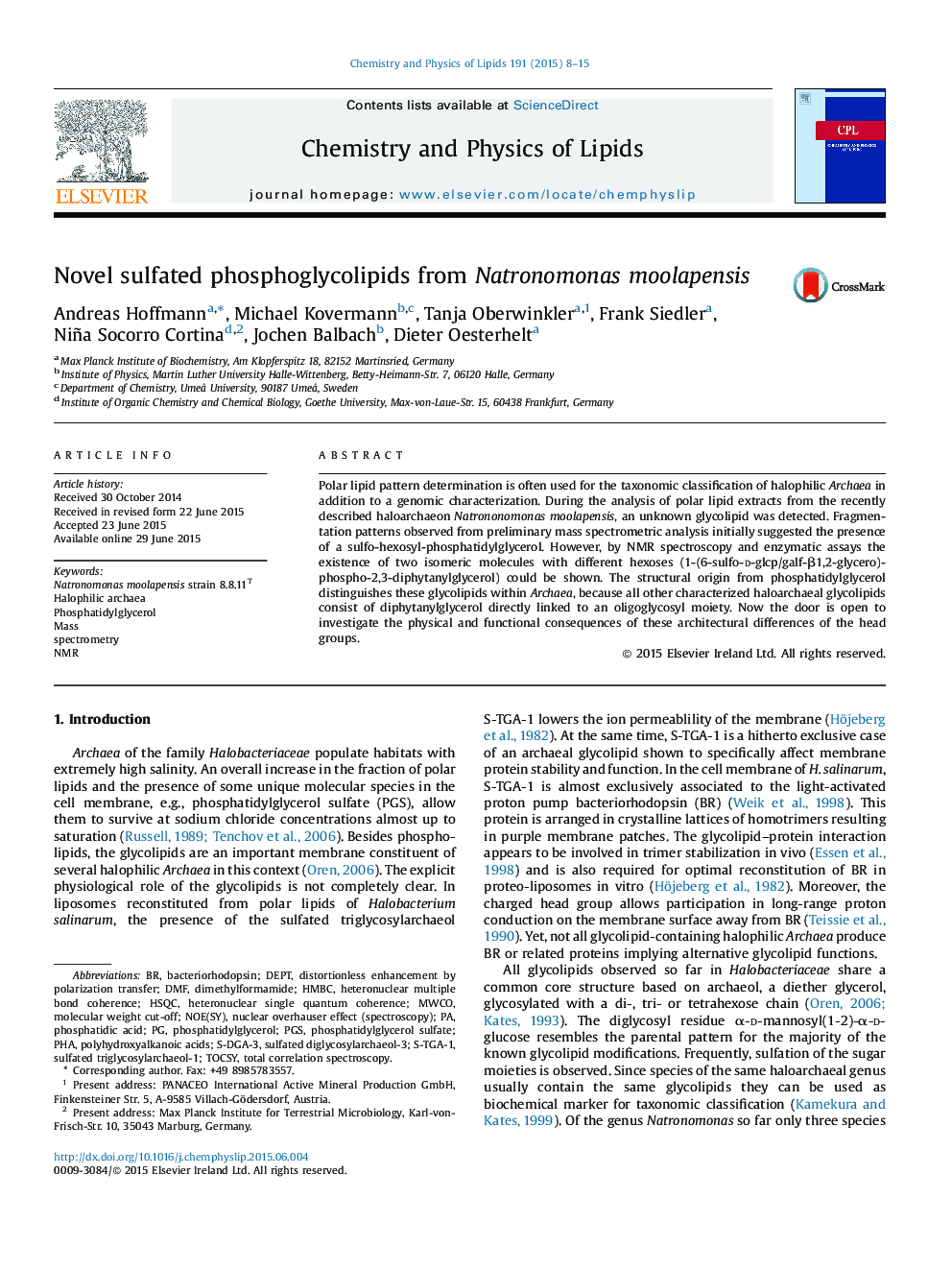| Article ID | Journal | Published Year | Pages | File Type |
|---|---|---|---|---|
| 1251590 | Chemistry and Physics of Lipids | 2015 | 8 Pages |
Abstract
Polar lipid pattern determination is often used for the taxonomic classification of halophilic Archaea in addition to a genomic characterization. During the analysis of polar lipid extracts from the recently described haloarchaeon Natrononomonas moolapensis, an unknown glycolipid was detected. Fragmentation patterns observed from preliminary mass spectrometric analysis initially suggested the presence of a sulfo-hexosyl-phosphatidylglycerol. However, by NMR spectroscopy and enzymatic assays the existence of two isomeric molecules with different hexoses (1-(6-sulfo-d-glcp/galf-β1,2-glycero)-phospho-2,3-diphytanylglycerol) could be shown. The structural origin from phosphatidylglycerol distinguishes these glycolipids within Archaea, because all other characterized haloarchaeal glycolipids consist of diphytanylglycerol directly linked to an oligoglycosyl moiety. Now the door is open to investigate the physical and functional consequences of these architectural differences of the head groups.
Keywords
DMFPHADEPTMWCOHSQCPGSTOCSYHalophilic archaeaphosphatidic acidPolyhydroxyalkanoic acidsdistortionless enhancement by polarization transferheteronuclear multiple bond coherencebacteriorhodopsinNMRMassdimethylformamideSpectrometryTotal correlation spectroscopyphosphatidylglycerolHMBC یا Heteronuclear Multiple Bond Correlationmolecular weight cut-offheteronuclear single quantum coherence
Related Topics
Physical Sciences and Engineering
Chemistry
Chemistry (General)
Authors
Andreas Hoffmann, Michael Kovermann, Tanja Oberwinkler, Frank Siedler, Niña Socorro Cortina, Jochen Balbach, Dieter Oesterhelt,
